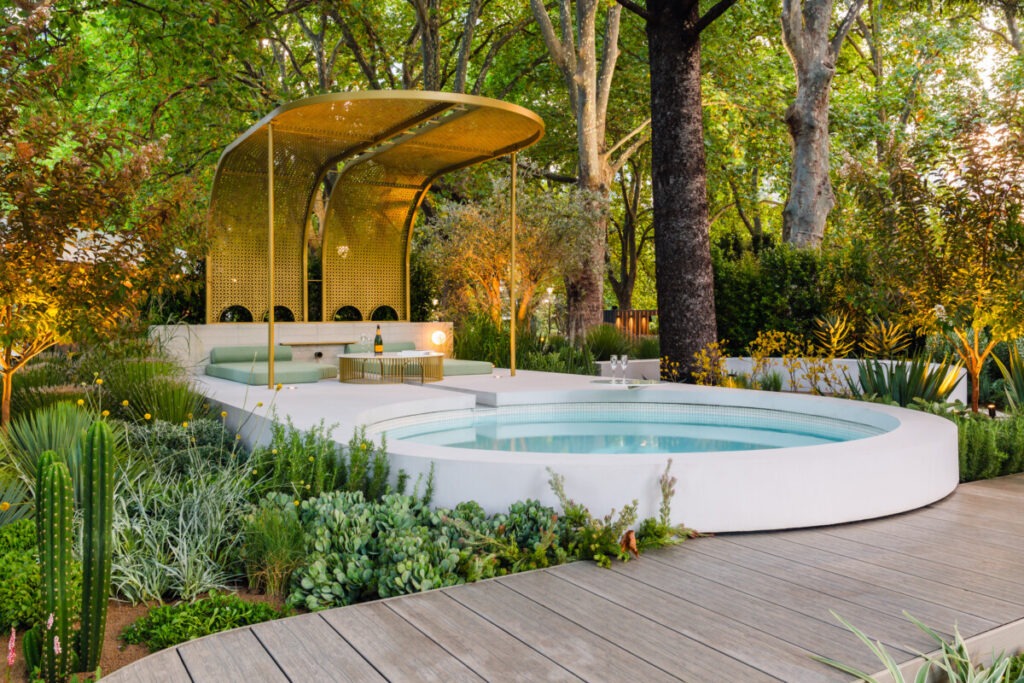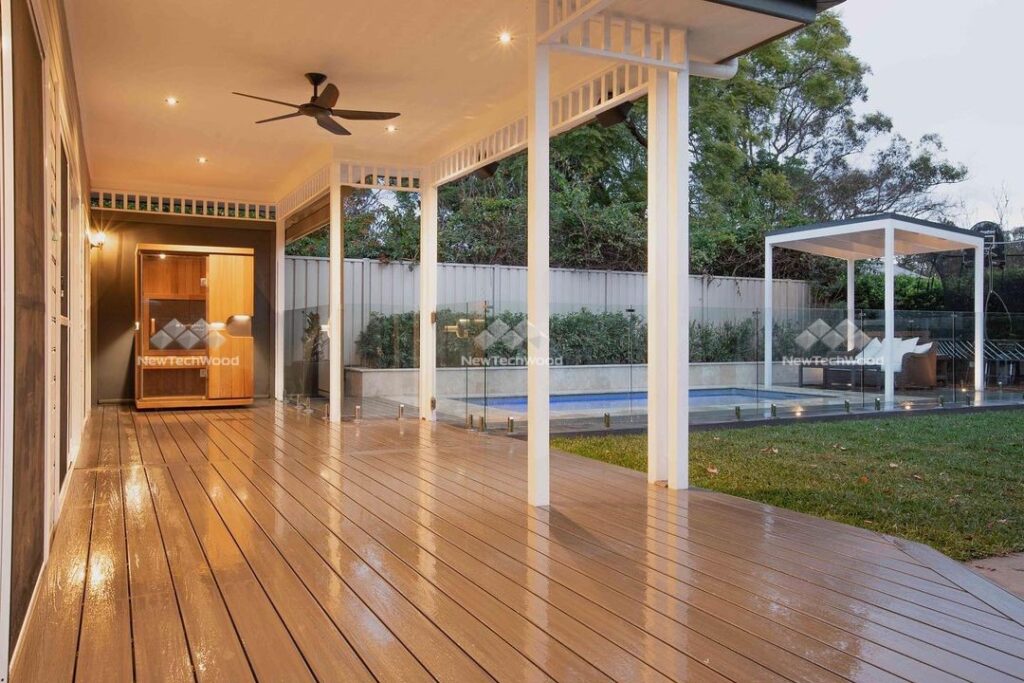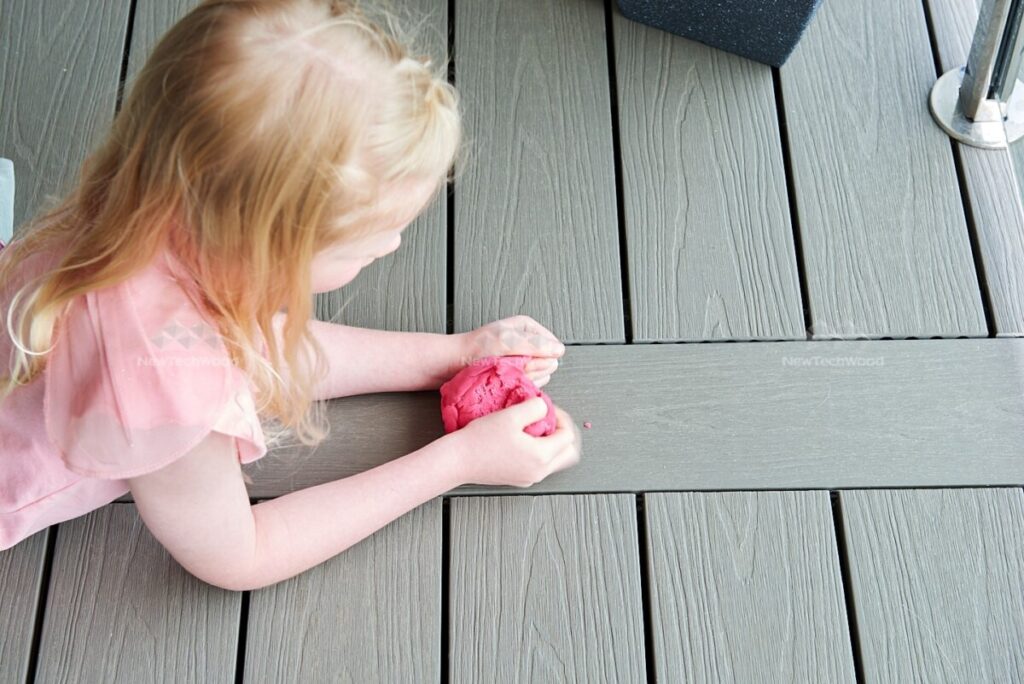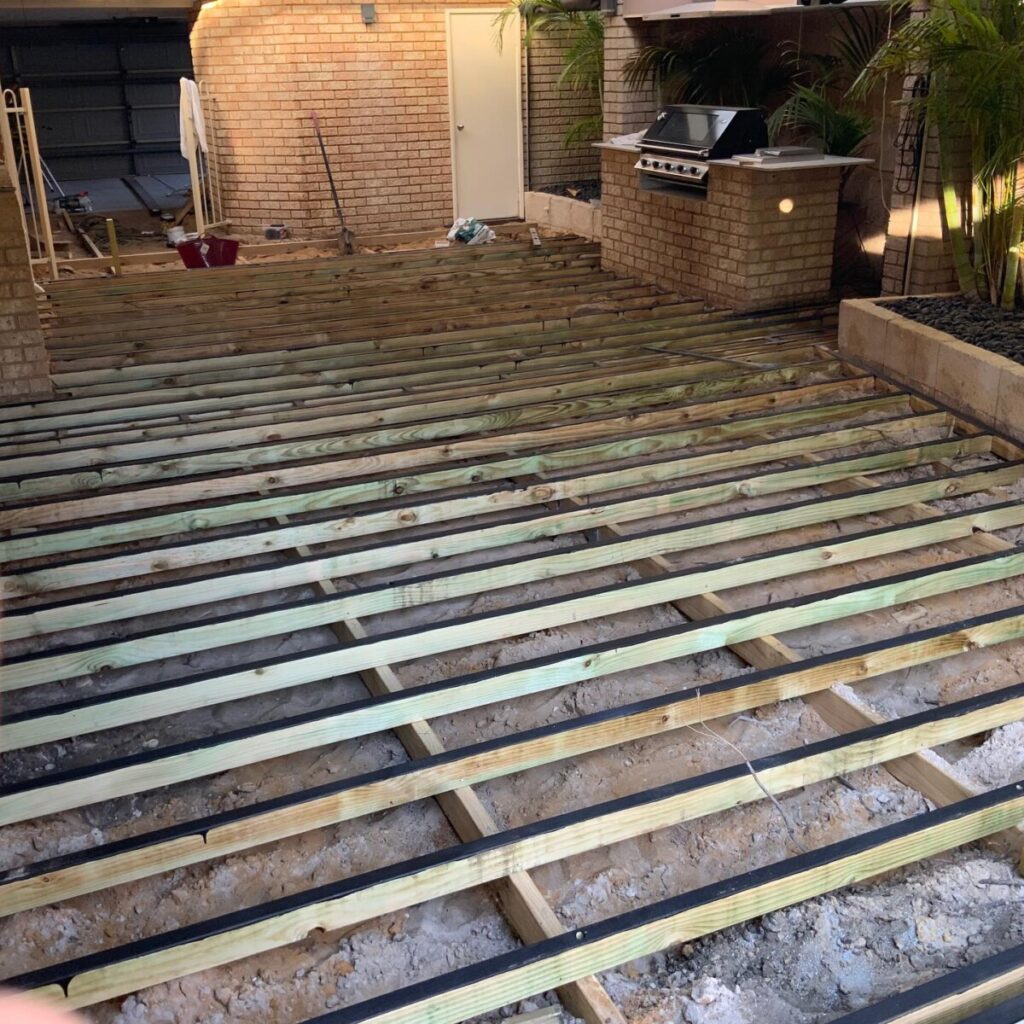News
10 Composite Decking Myths and Misconceptions
If we got a coin every time when someone says the wrong thing about composite decking…
Composite decking myths and misconceptions are still well alive, although composites have been transforming homes and commercial buildings for decades.
People love to give advice. Sometimes it’s good; sometimes misguided, and sometimes coloured by their personal prejudices.
They mean well, but we have addressed ten of the most common misconceptions below to help you wade through the sea of myths and make your OWN informed decisions.
Table of Contents
Timber is better than composite because it’s natural.
Timber is 100% natural. Therefore, it MUST be better than man-made “plastic decking”. This is probably one of the ultimate composite decking myths.
For starters, a composite brand like NewTechWood, for example, is actually made from 60% recycled dense wood fibres mixed with 35% high-grade (HDPE) recycled plastics, so you could hardly call it “plastic decking”.
This composite core is then completely capped with a strong and durable polymer shield with extremely low water penetration that looks realistically like timber grain.
Manufacturers must meet the changing values of today’s discerning customers, who know deforestation is unhealthy for our planet. It impacts our air quality and leaves our native wildlife homeless. Environmentally aware composite manufacturers like NewTechWood take this into consideration with their production.

Can you spot the difference? It looks like timber! Photo: Eric Holt
Nay-sayers talk about sustainably sourced timber, but NewTechWood does not cut down one single tree for its products, and every year, the use of recycled plastic in its manufacture saves over 26,000 tons of plastic from being buried in landfills forever. Yet, we produce a stronger and more durable composite than natural timber.
Also, composite never requires staining or sealing, thereby eliminating the need for fossil-fuel-based chemical stains and sealants that natural timber requires over its lifetime. We rest our case.
Composites are hard to install
Tell that to the thousands of DIY-ers worldwide who have already installed their own decks successfully. Of course, it is easier for a tradesman to install, but all constructions are easier for trained and qualified tradesmen. That’s their job. In support of the keen DIY-er, NewTechWood has excellent installation guides and videos to help with the installation process, and our experts are always ready to offer guidance.
We also offer accessories like deck framing systems, deck pedestals, matching coloured head screws, deck lights, etc., to make the job even easier.
If you want the easiest installation, consider composite timber-look deck tiles that are so easy to install that a child can do it (and they do!)
So, hard to install? Judging by the evidence to date, we think not.
Composites are too expensive. Timber is cheaper.
Is it? Well, some timbers are cheaper – to begin with. Good quality composites, like NewTechWood, are virtually maintenance-free, and by this, we mean no having to re-sand and restain, revarnish or repaint over its lifetime, unlike natural timber that requires this regularly for its entire lifetime… and you are paying for it. Besides, NewTechWood is immune to all of the hazards that affect natural timber and cause natural timber to break down over time (if white ants don’t get to it first.) We don’t know what your time is worth to you, but whether or not you pay a professional to perform this necessary natural timber deck maintenance over the years or whether you give up your spare time to do it yourself, there is also the cost of equipment and materials needed – none of which is needed for a NewTechWood deck.
So yes, upfront costs of buying and installing a new deck may be cheaper with natural timber, but in 3-5 years’ time and ongoing, your timber deck will start costing you – in time and money, whereas with composite, you pay once, and that’s it.
Timber and composite decking need too much maintenance.
Yes, timber does need ongoing maintenance, but the new generation composite doesn’t – although like anything you own and want to keep looking good, it does need cleaning occasionally, and you’d be cleaning your patio area anyway.

Some natural timber lovers will tell you about certain timbers that require little maintenance – these timbers are very expensive varieties, and even these timber lovers admit they do need sealing to protect them. Sealants wear off over time, and you’re back to resanding and resealing. Not sure how they classify that as “no maintenance”. Or they will suggest to avoid that you can let your deck fade naturally to silver grey. Well, yes, but then you have an unprotected grey deck that is going to dry out, split, and splinter. If you want that faded grey look, composites offer the same colour options – without the drying, splitting and splintering.
Composites have mould and mildew problems.
NEWS FLASH! So does natural timber… so can paving and anything living in perpetual dampness and moisture, for that matter. In the early days of composites and today possibly, some cheaper brands might still have that problem, but the better-quality composite brands, like NewTechWood with its protective capping, means if mould or mildew forms under a long-standing flowerpot, it can easily be scrubbed off.
It can NOT get into the core and damage the composite board.
Composites stain!
Hey, so does natural timber. However, the difference is that known staining substances like red wine, for instance, if wiped up within a reasonable time, will NOT stain a NewTechWood deck, but they will soak in and stain your natural timber deck.
Likewise, BBQ oil splatters can make a real eyesore of the timber decking around it unless that timber has been sealed and thus is more easily cleaned up. And there is that maintenance requirement again… you must keep that timber deck sealed, or it will stain easily.
On the other hand, modern composites are already covered with a protective shield that allows wiping such spills up easily without staining. Nothing to see here, folks; let’s move on…
Composites are slippery
Some cheaper composites may be, as can polished natural timbers and even polished concrete. However, better-quality composites, like NewTechWood, are manufactured with slip safety in mind, offering slip ratings from P2 to P5. As for natural timber, well, it’s been hard to find any slip ratings confirmed anywhere.
From floorsliptest.com.au: “The slip resistance of timber can vary depending on the type and finish. Reeded timber or profiled timber surfaces generally have a higher level of slip resistance along with rough timber-sawn flooring. There appears to be little information in regards to slip resistance for timber floorings or with deck and boardwalk specification.”
Not much help, is it? Composites are required to not only be slip tested but also publish their slip ratings. The same can’t be said about natural timber, so good luck with that!
The composite is too hot to stand on.
Just as beauty is in the eye of the beholder, heat reactions differ because we are all different. But let’s be honest… generally, composites are hotter than natural timber due to the plastic content but are comparable to standing on cement/concrete/paving.
You wouldn’t just stand barefoot on those surfaces on a typically hot Australian summer day.
And don’t get us started on hot beach sand! You’ll be happy to know NewTechWood is NOT like hot beach sand.
As a personal experiment, a curious female employee removed her shoes and stood on the outside NewTechWood display deck on a 38-degree day in Perth.
She stood there for a while, then went and stood, also barefoot, on the cement driveway. She said she felt “very little difference”.
A male customer intrigued and somewhat disbelieving, decided to do the same. He complained that both burned his feet!

Obviously, one person’s “too hot” is another person’s “meh”, so if heat is a concern, grab some samples, take them home, and test them for yourself.
Composites scratch too easily.
Everything scratches easily (unless it’s a diamond), especially when you constantly drag sharp objects over it. Brick pavers are probably the only surface that wouldn’t be affected, but timber and composites can. But yes, if you have deep scratches with timber, you can sand it down and reseal it. With composites, you can’t sand it down. You can camouflage scratches with special composite deck crayons. Otherwise, you’d need to replace the board.
NewTechWood is scratch-resistant but not scratch-proof. We recommend rubber stoppers on a chair and deck legs and do not drag sharp objects across them like BBQs.
General activity, though, including dog claws, will not affect it. But whether your deck is timber or composite, you’d want to protect it for as long as possible anyway, right?
Consider an outside floor rug in high-traffic areas, around sofa settings, tables, and chairs. It will look stylish and protect your investment.
Composite decks sag because they are so heavy.
Yes, composite timber is heavier than natural timber, but if installed according to the manufacturer’s guidelines, there will be no sagging.
For example, with NewTechWood’s US49 Terrace decking, the recommended residential joist span is 450mm. It can be smaller if you like, but not larger. If you decide to cheat and install on 700mm joist spans, for example, and your deck sags, you only have yourself to blame, and you will have voided your 25-year warranty.
Always follow your manufacturer’s installation guidelines.

(Image source: Castlegate Home Improvements)
Composite decking myths are just – myths.
If any other myths or misconceptions concern you, feel free to contact our team for answers.
If you are ready to order, fill out our Get Your Free Quote form.